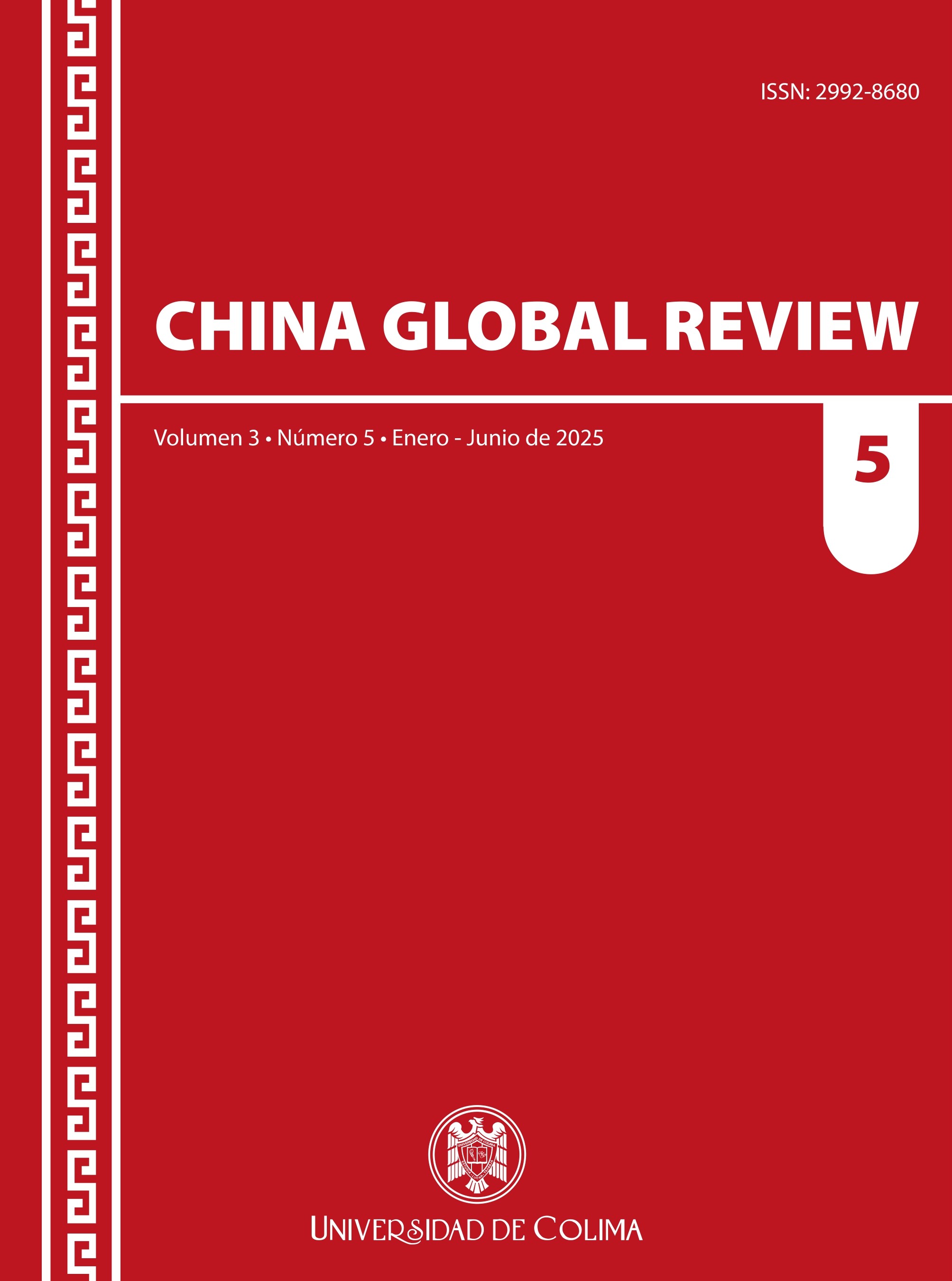Chinese Cooperation: between Foreign Policy and Demands of Domestic Economy
DOI:
https://doi.org/10.53897/REvChinaGR.2025.05.04Keywords:
International cooperation, South-South cooperation, International relations, foreign policy, China in the international economyAbstract
China has become the largest partner of South-South cooperation. Through cooperation, China seeks to build a good reputation to improve its international status. At the same time, since many raw materials is required to meet the growing supply demand of the Chinese domestic market, sourcing from the overseas market is also pushing cooperation. Win-win planning that seeks to achieve mutual benefits highlights the negotiation process and the search for complementary advantages when resolving conflicts over international affairs. The central objective of this article is to evaluate Chinese cooperation from the point of view of aid effectiveness, resolution of internal problems and international relations. The effectiveness of Chinese cooperation is hampered due to the partiality of its motivations. Although its policy may have an impact on the economic development of the beneficiary countries, the consideration of practical internal benefits prevails over the objectives for international development
Downloads
Metrics
References
Barría, C. (2021). La estratégica red de puertos que China controla en el mundo y cómo está avanzando en América Latina. BBC News Mundo. https://www.bbc.com/mundo/noticias-58849114
Bueno de Mesquita, B., & Smith, A. (2007). Foreign aid and policy concessions. The Journal of Conflict Resolution, 51(2), pp. 251-284.
Bräutigam, D. (2011). Aid with Chinese characteristics: Chinese foreign aid and development finance meet the OCDE-DAC aid regime. Journal of International Development, 23(5), pp. 752-764.
Breslin, S. (2013). China and the global order: Signalling threat or friendship? International Affairs, 89(3), pp. 615-634.
Cai, F., & Wang, D. W. (2005). China’s demographic transition: Implications for growth. In R. Garnaut, & L. G. Song (Eds.), China boom and its discontents (pp. 34-50). Asia Pacific Press.
Cai, F., Lin, Y. F., Zhang, X. S., Zhu, L., & Lv, Z. (2018). 40 years of Reform and Opening and Economic Development of China. Economic Dynamics, 8, pp. 4-17. (in Chinese).
Carmody, P., Zajontz, T., & Reboredo, R. (2022). From ‘debt diplomacy’ to donorship? China’s changing role in global development. Global Political Economy, 1(2), pp. 198-217.
Custer, S., Dreher, A., Elston, T. B., Fuchs, A., Ghose, S., Lin, J., Malik, A., Parks, B. C., Russell, B., Solomon, K., Strange, A., Tierney, M. J., Walsh, K., Zaleski, L., & Zhang, S. (2021). Tracking Chinese development finance: An application of aiddata’s TUFF 2.0 methodology. AidData at William & Mary.
Caubet, M., Heriquez, I., & Pavez, L. (2019). Los impactos de la iniciativa de la Franja y la Ruta en el desarrollo territorial y económico interno en la República Popular China. En M. Bogado, M. Caubet, & F. Staiano (Eds.), China: Una nueva estrategia geopolítica y global. La iniciativa de la franja (pp. 45-56). Instituto de Relaciones Internacionales y Centro de Estudios Chinos.
De Arriba, R. (2010). Assessing Economic Transition in Eastern Europe after Twenty Years. Transformations in Business & Economics, 9, 2(20), pp. 42-63.
Ding, S. B., & Kan, D. Y. (2007). An interpretation of foreign aid from the theory of social exchange. International Political Studies, 3, pp. 38-55. (in Chinese)
Domínguez, R. (2019). La constelación del sur: La Cooperación Sur-Sur en el cuarenta aniversario del Plan de Acción de Buenos Aires. En R. Domínguez, G. Lo Brutto, & J. Surasky (Eds.), La constelación del Sur: Lecturas históricocríticas de la Cooperación Sur-Sur (pp. 13-131). BUAP y Universidad de Cantabria.
Dreher, A., & Fuchs, A. (2015). Rogue aid? An empirical analysis of China’s aid allocation. Canadian Journal of Economics, 48(3), pp. 988-1023.
Esteban, G., & Trivi, N. (2019). La nueva Ruta de la Seda y la disputa por el poder mundial. En L. Bogado, M. Caubet, & F. Staiano (Eds.), China: Una nueva estrategia geopolítica y global. La iniciativa de la franja (pp. 96-111). Instituto de Relaciones Internacionales y Centro de Estudios Chinos de la UNLP.
Fan, Y. (2008). Relative interest, absolute interest, and foreign aid: The evolution of donor preferences after World War II. European Studies, 6, 79-94. (in Chinese)
Haug, S., & Kamwengo, C. (2022). Africa beyond South-South cooperation: A frame with limited resonance. Journal of International Development, 35(4), pp. 549-565
Hernández, J. C. (2018). ¿Un nuevo norte en el Sur?: La cooperación china en América Latina y el Caribe. Análisis GESI, 22(1), 1-9.
Horigoshi, A., Custer, S., Burgess, B., Marshall, K., Choo, V., Andrezejewski, K., & Dumont, E. (2022). Delivering the Belt and Road: Decoding the supply of and demand for Chinese overseas development projects. AidData at William & Mary.
Kaplan, S. (2016). Banking unconditionally: political economy of Chinese finance in Latin America. Review of International Political Economy, 23(4), pp. 643-676.
Kowalski, B. (2021). China’s mask diplomacy in Europe: Seeking foreign gratitude and domestic stability. Journal of Current Chinese Affairs, 50(2), pp. 209-226.
Lai, H.Y. (2021). The rationale and effects of China’s Belt and Road initiative: Reducing vulnerabilities in domestic political economy. Journal of Contemporary China, 30(128), pp. 330-347.
Li, M. (2010). China and maritime cooperation in East Asia: Recent developments and future prospects. Journal of Contemporary China, 19(64), pp. 291-310.
Lin, Y. F., & Wang, Y. (2017). Going beyond aid: Development cooperation for structural transformation. Cambridge University Press.
Luo, Y., Hu, W., & Yan, S. (2020). Western Scholars’ Perceptions and Commentaries on the Community of Human Destiny. Studies on Socialism. Accessed 24 April 2022: http://socialismstudies.ccnu.edu.cn/bencandy.php?fid=74&id=2050. (in Chinese)
Malacalza, B. (2014). La política de cooperación al desarrollo como dimensión de la política exterior desde la teoría de las relaciones internacionales. Mural Internacional, 5(2), pp. 163-176.
Margueliche, J. (2019). La nueva Ruta de la Seda China y sus implicancias espaciales. Un análisis teórico desde la perspectiva de la (des) territorialización. En L. Bogado, M. Caubet, & F. Staiano (Eds.), China: Una nueva estrategia geopolítica y global. La iniciativa de la franja (pp. 82-95). Instituto de Relaciones Internacionales y Centro de Estudios Chinos.
Molinero, J. (2015). El plan “made in China 2025”. Instituto Argentino para el Desarrollo Económico (IADE). https://www.iade.org.ar/system/files/made_in_china_2025.pdf
National Bureau of Statistics of China (2022). Statistical data. China National Bureau of Statistics. http://www.stats.gov.cn/english/
People’s Republic of China (2021). White book on China’s International Development Cooperation in a New Era. State Council. http://www.gov.cn/zhengce/2021-01/10/content_5578617.htm (in Chinese)
Pérez, A. P. (2017). OBOR: Las 5 claves de la mayor iniciativa de infraestructuras mundial liderada por China. Documento Opinión, núm. 113/2017. https://www.ieee.es/Galerias/fichero/docs_opinion/2017/DIEEEO113-2017_OBOR_China_AguedaParra.pdf
Ren, X., & Guo, X. Q. (2016). Interpretation of China’s foreign aid: A preliminary theoretical analysis. Fudan Journal, 4, pp. 155-165. (in Chinese)
Rotblat, C. (2017). Weaponizing the plumbing: Dollar diplomacy, yuan internationalization, and the future of financial sanctions. UCLA Journal of International Law and Foreign Affairs, 21(2), pp. 311-360.
Taylor, I., & Zajontz, T. (2020). In a fix: Africa’s place in the Belt and Road initiative and the reproduction of dependency. South African Journal of International Affairs, 27(3), pp. 277-295.
Vadell, J., Lo Brutto, G., & Cesar, A. (2020). The Chinese south-south development cooperation: an assessment of its structural transformation. Revista brasileira de política internacional, 63(2), pp. 1-22.
Wang, Z. (2020). The symbiosis between Chinese infrastructure aid and the international development system: An industrial structure perspective. Diplomatic Journal, 2, pp. 51-81. (in Chinese)
Zhang, C. (2021). ¿Es China una superpotencia en ayuda al desarrollo? IDEES, 52. https://revistaidees.cat/es/es-china-una-superpotencia-en-ayuda-al-desarrollo/
Published
How to Cite
Issue
Section
License
Copyright (c) 2025 Raúl de Arriba, Meng Zhan

This work is licensed under a Creative Commons Attribution-NonCommercial-ShareAlike 4.0 International License.
China Global Review permite compartir, copiar y redistribuir el material en cualquier medio o formato; adaptar, remezclar, transformar y construir sobre el material, dando crédito a la obra de manera adecuada y proporcionando un enlace a la licencia, indicando si se han realizado cambios.









